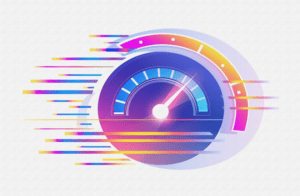I think we can all agree that there is no shortage of blogs on the internet. If you are looking for information on a topic (especially a B2B topic), there is a good chance that you will find at least one blog post on this topic. With the sheer number of blogs that are available online, clearly, this is a competitive space. But why do blogs fail?
You can start to assume why blogs fail. You are constantly trying to get your reader’s attention and attract new ones. All of this effort you go to is for approx. 15 seconds. With the majority of your readers only viewing your article for 15 seconds, it is your job to make it as engaging as possible to pull your readers in for longer. Now reading that number, I am sure you are hitting that 15 second mark and thinking of leaving because blogging can’t be important if your readers don’t actually read your content. However, the reason businesses blog is because on average, marketers who blogged saw upwards of 13x the ROI compared to marketers who did not prioritize blogging efforts. Now that is a big enough number for me to ignore the 15 seconds and push on with my blogging efforts.
Beyond generating revenue, blogs are a great way to increase your brand awareness, share your content, increase SEO, build a following and more. It seems easy enough, write some blog posts and see all of this growth. Not exactly; before you hit publish on your articles, it’s important to understand why blogs fail and how to avoid this yourself. Now, for those of you that have stuck around past the 15-second mark, let’s dive into why blogs fail and how to make sure yours doesn’t.
Why Blogs Fail

Content Is King – Bill Gates
Do you know why your blog exists? Hopefully, you do. If so, does your content support what your blog was set out to do? One of the main reasons blogs fail is due to the lack of purposeful, engaging content. In fact, one of the most important types of content is original content. If you are having trouble thinking of purposeful, engaging content, Google defines this as “original content that adds value for users”. This type of content will allow you to rank well on Google, which helps you attract readers and create a stronger following.
The first step to making valuable content for your readers is to make it a priority. It is hard to write content for your readers that is supposed to add value if you threw it together last minute without a second thought to what you are writing. We have all written a paper like that, whether it was in school or at work. The content was poor, and it showed. Your planning starts with a well-documented strategy. This strategy can include a content agenda, outline, list of trending topics, etc. In order to create the highest quality content, your planning stage should include all of this and more.
Once your planning is in place, you can start moulding your blog post. It is important to create a writing persona as it will keep your content consistent. It is equally important to ensure your target audience can relate to your persona.
SEO Isn’t What It Is Optimized To Be
We all know SEO can be frustrating. You can spend hours making sure SEO and readability of your article are perfect so you will have the best ranking you can. Then, moments after you hit publish, they can change the algorithm. It’s a painful day when that happens, and we have all been there. But ignoring SEO altogether is another reason why blogs fail. You need people to find, read, and share your blog, which is almost impossible without SEO. Across all industries, SEO remains the highest form of traffic on blogs. With over 65% of blog traffic coming from organic web traffic, SEO is very important when it comes to your blog. Fortunately, some SEO rules remain true over the years. The rest will continue to change, and you will have to adapt as necessary.
- Keywords: You should research your keywords ahead of time and see what works best for your blog. Keywords relate to your blog post’s intent, help improve your ranking and are critical in your readers finding your article.
- Write Descriptions: Text is the foundation of search. You will rank well if you create copy for all images and videos on your articles. SEO cannot see what your video is about without a description. Video and images are seen as high-quality content, but in order for them to rank well, you have to give it a reason to.
- Optimize For Voice Search: With over 60% of searches using a voice assistant, it is important to ensure that your blog is optimized for voice searches to stay ahead of the SEO game.
Beautifully Designed Blog
We have all been there, we are doing research or looking for information, and you click on someone’s article, then BOOM, you are transported back to the ’90s with their blog design. Not having a well-designed blog could be the tipping point for someone to bounce immediately. Speaking from personal experience, if a website or blog looks like it was poorly designed, hasn’t been updated in years, or was copy and pasted from a website builder, there is a good chance I am leaving. It is hard to trust information from a website that someone didn’t take the time to create properly; what else have they not taken the time to do correctly.
While the look of your site is important for readers to easily navigate and find the information they are looking for, it also helps search engines index your pages for SEO. If it is tough for people to navigate your pages, they are more than likely to bounce and never come back. A bad experience makes over 80% of visitors unlikely to return to a site.
User experience is a specialty on its own. So unless you want to dabble in the psychology of the human mind and how we make decisions, it is best to work with a professional building software. This way, you can create a clean, easy to navigate, and fast website for your visitors.
Inconsistency Kills
When you first start your blog, you are full of ideas and have plans to post every day possible. On day 14, you are down to 1-2 posts a week. On day 30, you are struggling to post 1-2 a month. It is beyond important to pace yourself and create a posting schedule. This way, when you have your ideas, you can space them out so you are posting consistently and not having large gaps where you would lose readers.
Blogging takes time; it can take almost 4 hours to write a blog post! You then have to add the time to edit what you wrote because no one is perfect the first time, add images/videos, add links, optimize your post, then post it. It is a long process; it is not as easy as everyone thinks. For small companies, it can be too much to post every day or multiple times a week. On the other hand, large companies generally have enough staff or blog writers to post every day.
Don’t worry if you can’t post everyday. The biggest challenge for most bloggers is finding time to create and promote content. Instead, try these tips to help overcome challenges in creating content and get those creative juices flowing. Then, just make sure you are posting consistently to remain relevant and appearing in your reader’s searches.
What To Take Away
Now, as you can see, there are seemingly endless ways to have your blog fail on you. But a lot of it comes down to being active on your blog. If you remain active, consistent, relevant, and on top of new industry changes, you are going in the right direction. By following these four tips, you will have a great chance of creating a blog that actually shows up in search results, offers content readers want, keeps readers coming back, and might have them sharing your content for you. Happy writing, and I look forward to finding your next post!
 Identify
Identify Personalize
Personalize Benchmark
Benchmark Agencies
Agencies Integrations
Integrations Case Studies
Case Studies Use Cases
Use Cases Blog
Blog Resources
Resources









